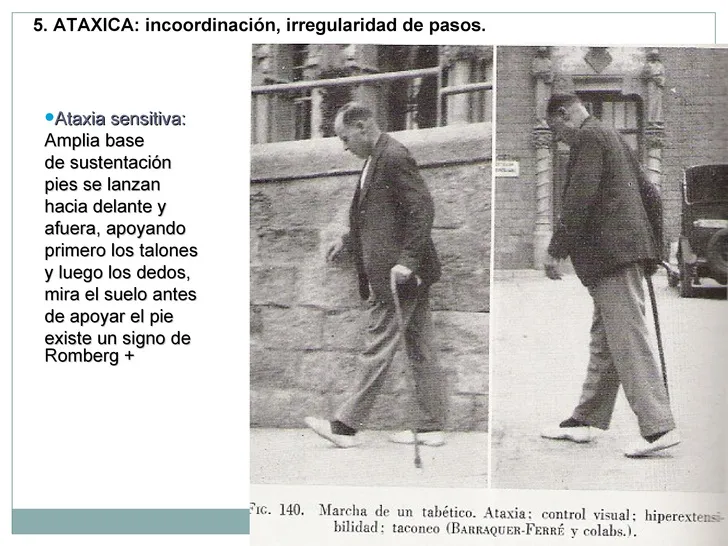The term sensitive ataxia is used to indicate that type of ataxia due to the loss of proprioceptive stimulus from the lower limbs.This lack deprives the subject of knowledge of its position in space, of the progress of the movement that is being carried out, of the state of muscle contraction, and the finest details of the surface of the land on which it is wandered.
This clinic is generally caused by the dysfunction of the dorsal columns of the spinal cord, which are responsible for carrying the proprioceptive information to the brain.Peripheral neuropathies can also cause it.In some cases, the cause of sensory ataxia in its place may be the dysfunction of the different parts of the brain that receives that positional information, including cerebellum, thalamus and parietal lobes.
Patients with sensitive ataxia tend to adopt a broad base of support and perform slow and unstable steps, with a march that makes them walk cautiously and specifying visual help.They find difficulties to walk along irregular surfaces or with a decrease in lighting.
The romberg test will be positive in these patients.During the physical exam, the patient is asked to stand with both feet together and keep the eyes closed.In affected patients, this will make instability worsen significantly, and wide oscillations of stability and possibly a fall to the ground if the patient is not subject.
Also, when the patient is standing with his arms and hands extended to the doctor, if his eyes close, the patient's fingers will tend to "fall" and then restore the horizontal position by a sudden extension due due dueto repeated muscle contractions ("ataxic hand").

